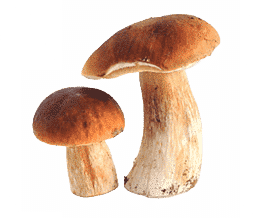
LSD and Autism: Exploring Possible Connections

Autism Spectrum Disorder (ASD) affects millions of people around the globe, creating unique challenges for those who live with it. While traditional treatments have provided some relief, the search for more effective approaches continues.
Among the more unconventional avenues being explored is the use of LSD (Lysergic Acid Diethylamide). Could this psychedelic hold the key to unlocking new therapeutic possibilities for individuals with autism?
Key Takeaways
LSD shows potential benefits for treating autism, such as enhancing social interactions, reducing anxiety, and improving sensory processing, but scientific evidence remains limited.
Ethical and legal challenges surround the use of LSD in autism treatment, with concerns about informed consent, potential risks, and the legal status of the drug complicating further research.
Ongoing research is essential to understanding the true therapeutic potential of LSD for autism, but caution is advised until more rigorous studies and comprehensive data are available.
What is Autism Spectrum Disorder
ASD is a developmental disorder characterized by difficulties in social interaction, communication, and repetitive behaviors. The Diagnostic and Statistical Manual (DSM-5) outlines the criteria for diagnosing autism, but each case is unique.
Some individuals with autism experience sensory sensitivities, while others may struggle with social anxiety. These challenges often lead families and healthcare professionals to explore various treatment options.

Communication Difficulties
Many people with ASD struggle with communication. It can range from delayed speech development to difficulties understanding non-verbal cues, such as body language and facial expressions. Some may need more ability to engage in typical conversation, which can lead to misunderstandings and social isolation.
Social Interaction Struggles
Social interaction can be particularly challenging for individuals with ASD. They may have trouble understanding social norms, making forming and maintaining friendships difficult. This can lead to feelings of loneliness and frustration. Social anxiety is also common, further complicating interactions with others.
Repetitive Behaviors
Repetitive behaviors, such as hand-flapping, rocking, or insisting on specific routines, are common in individuals with ASD. These behaviors can be comforting but interfere with daily activities and flexibility in adapting to new situations.
Difficulty with Change
Many people with ASD prefer routine and may become distressed by changes in their environment or daily schedule. Even minor changes can be overwhelming, leading to anxiety and behavioral challenges.
Executive Functioning Challenges
Executive functioning involves planning, organizing, time management, and task initiation skills. Individuals with ASD often struggle with these skills, which can affect their ability to manage daily tasks, schoolwork, or job responsibilities effectively.
LSD’s Role in Mental Health

LSD has a complicated history. Once heralded as a miracle drug for various mental health conditions, it was later banned and classified as a controlled substance.
Despite this, researchers have not entirely abandoned the study of LSD. Its ability to alter sensory perception and influence serotonin receptors has kept it in the spotlight, particularly in the context of treating conditions like Post Traumatic Stress Disorder (PTSD) and anxiety.
But what about autism? The idea of using LSD to treat autism might seem far-fetched, but there’s a growing interest in its potential benefits. Anecdotal reports suggest that LSD might help reduce anxiety, enhance social interactions, and improve sensory processing in people with autism. However, these reports are far from conclusive.
Potential Benefits of Using Psychedelics for Autism
The potential therapeutic effects of LSD for individuals with autism are intriguing. Enhanced social interactions, reduced anxiety, and altered sensory perception are just a few of the positive outcomes reported by those who have experimented with the drug. However, the limited scientific evidence and the legal status of LSD pose significant challenges to drawing definitive conclusions.
On the flip side, the risks are substantial. LSD is a powerful substance that can cause unpredictable effects, especially in individuals with underlying health conditions. The ethical concerns surrounding its use in treating autism cannot be ignored. Researchers must navigate these ethical guidelines carefully, ensuring informed consent is obtained and rigorous methodologies are employed in any clinical trials.

Historical Research On Autism and LSD Psychedelics

Ongoing research into the use of LSD in treating autism is still in its early stages. While some preclinical evidence suggests that LSD could have therapeutic value, more research is needed to understand the underlying mechanisms and potential therapeutic benefits. Controlled clinical trials, with clear ethical considerations, are essential for gaining valuable insights into how psychedelic compounds like LSD might be used to treat autism.
The autism community remains divided on the issue. While some individuals with autism and their families are open to exploring new treatments, others are wary of the poorly defined outcome measures and potential risks associated with LSD. Healthcare professionals, too, are cautious, recognizing the need for comprehensive research before recommending such treatments.
Ethical and Legal Considerations
The use of LSD in treating autism is fraught with ethical concerns. Informed consent, particularly in cases involving children or adults with significant cognitive impairments, is a major issue.
The legal considerations surrounding LSD further complicate matters. In most countries, LSD is classified as a controlled substance, making it difficult for researchers to conduct extensive scientific research.
Despite these challenges, researchers hope to shed light on the therapeutic possibilities of LSD for autism. The potential benefits, if proven, could revolutionize the way we approach treating autism spectrum disorder.
However, until more research is conducted and more scientific evidence is gathered, healthcare professionals and families must proceed cautiously.
Conclusion: A Cautious Exploration
The connection between LSD and autism is a topic that requires careful exploration. While the potential therapeutic benefits are promising, the risks and ethical concerns surrounding its use cannot be ignored.
Current research is still in its infancy, and more rigorous studies are needed before we can draw definitive conclusions. For now, the use of LSD in treating autism remains a possibility—one that should be approached with both hope and caution.




